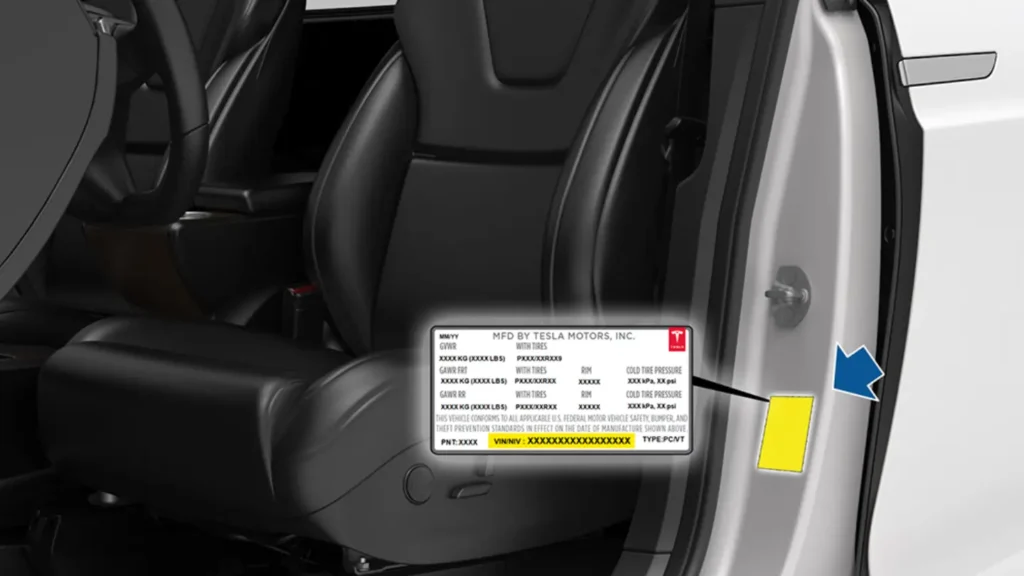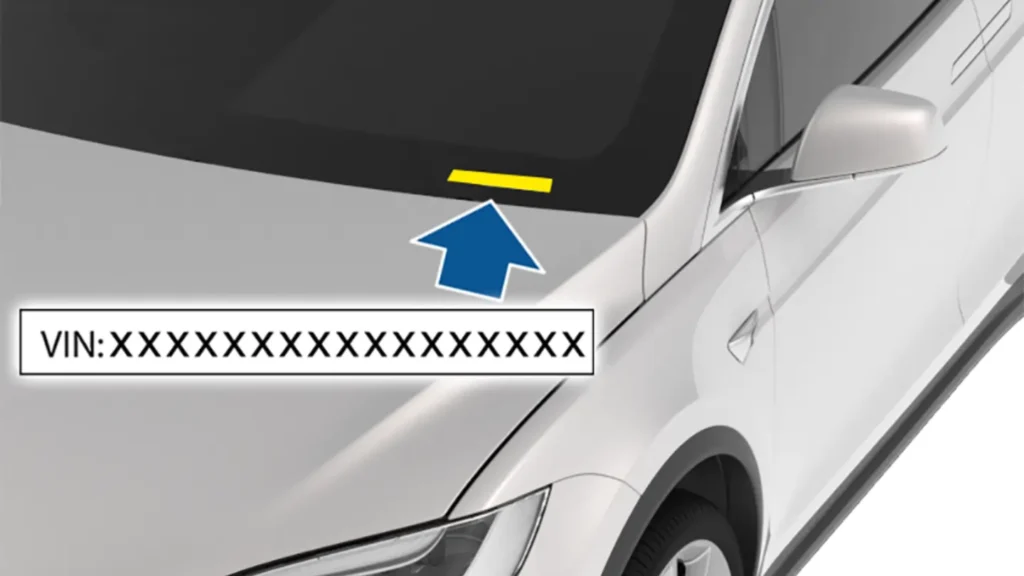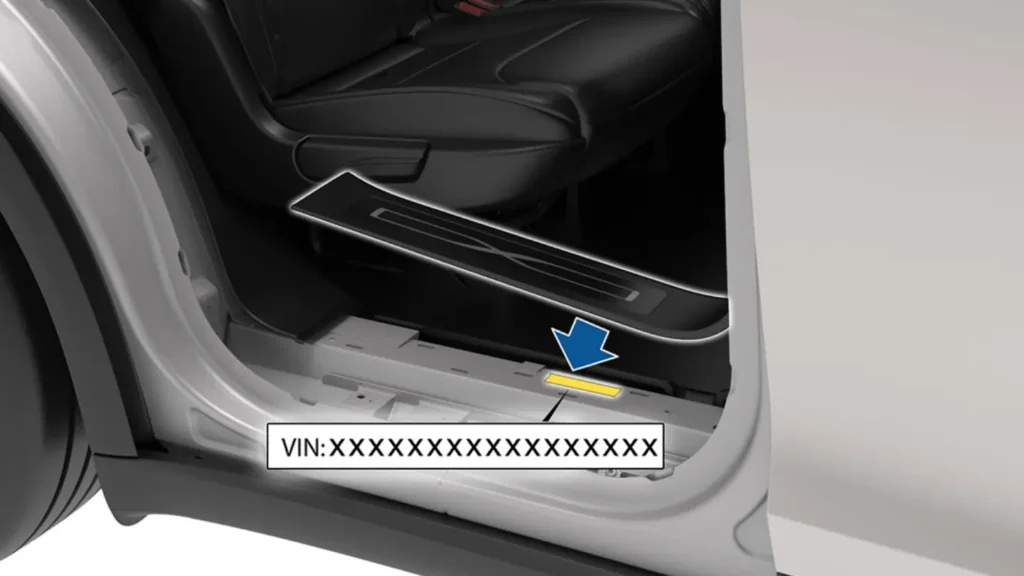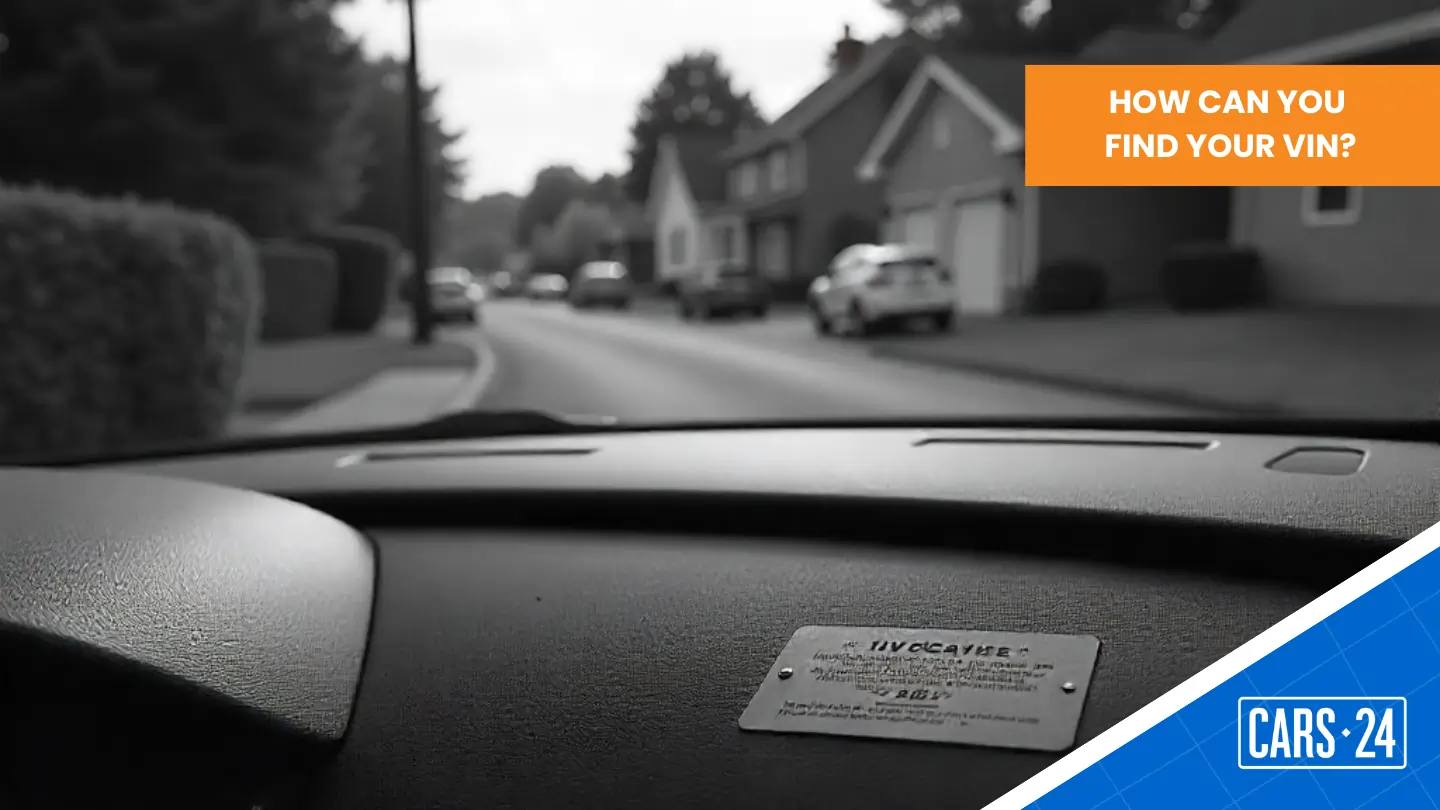A Vehicle Identification Number (VIN) is a unique 17-character code that acts like your car’s fingerprint – each one is unique. It’s essential for any car identification number check since it’s used to identify your vehicle for insurance, registration, warranty, recalls, and theft reporting purposes. If you’re wondering “how do I find my car’s VIN number?” or “where is my VIN number?”, you’re not alone.
Common locations to find your VIN

Your VIN number is typically stamped or displayed in multiple locations on your car. Here’s how to find VIN number quickly:
- Behind the windscreen: Look at the bottom corner of the dashboard where it meets the windscreen on the driver’s side. The vehicle identification number is typically located on a small metal plate, visible from the outside of the car.
- Registration papers: Your car identification number check can also be done using your registration certificate, insurance documents, or the details at the front of your owner’s manual.
- Driver’s door post or jamb: Open the driver’s door and inspect the door post, the area where the door latches when closed. Many cars display the VIN number here for easy access.
- Under the bonnet: The vehicle ID number may also be stamped on the front of the engine block.
- On the chassis: Check the frame behind the driver’s side tyre; some vehicles have the vehicle identification number etched on a structural part of the vehicle.
Why do I need to check the VIN?

Your car’s Vehicle Identification Number (VIN) isn’t just a code on the bodywork — it plays an important role when buying or selling a used car. By checking the VIN, you can:
- Confirm the car’s identity – The VIN ensures the vehicle matches its registration papers and hasn’t been tampered with.
- Check history reports – Services like PPSR (Personal Property Securities Register) use the VIN to reveal if a car is stolen, written off, or still under finance.
- Verify specifications – A VIN lookup can confirm details like the make, model, engine type, and year of manufacture.
Beyond buying and selling, your VIN is also important for:
- Insurance – Insurers use the VIN to correctly identify your vehicle.
- Recalls and safety notices – Manufacturers and authorities use VINs to notify owners of recall campaigns.
- Registration and warranty claims – State transport authorities and dealers rely on the VIN to process applications and service requests.
In short, the VIN protects both buyers and sellers, while also helping you stay on top of your car’s safety, insurance, and legal requirements.
Additional information: Compliance and build plates

In Australia, your vehicle identification number is also marked on the build or compliance plates attached to the car. Since July 2023, new vehicles and trailers must be recorded on the Register of Approved Vehicles (RAV). This ensures compliance with road standards and replaces the need for some older-style compliance plates.
If a VIN number has been removed, damaged, or altered, you may need to apply for a surrogate vehicle ID number through your state transport authority. This process confirms the identity of your car and ensures legal compliance. Remember, if you’re ever unsure where can you find the VIN number, these steps and checks will help you locate it easily!

Comments
New Comment